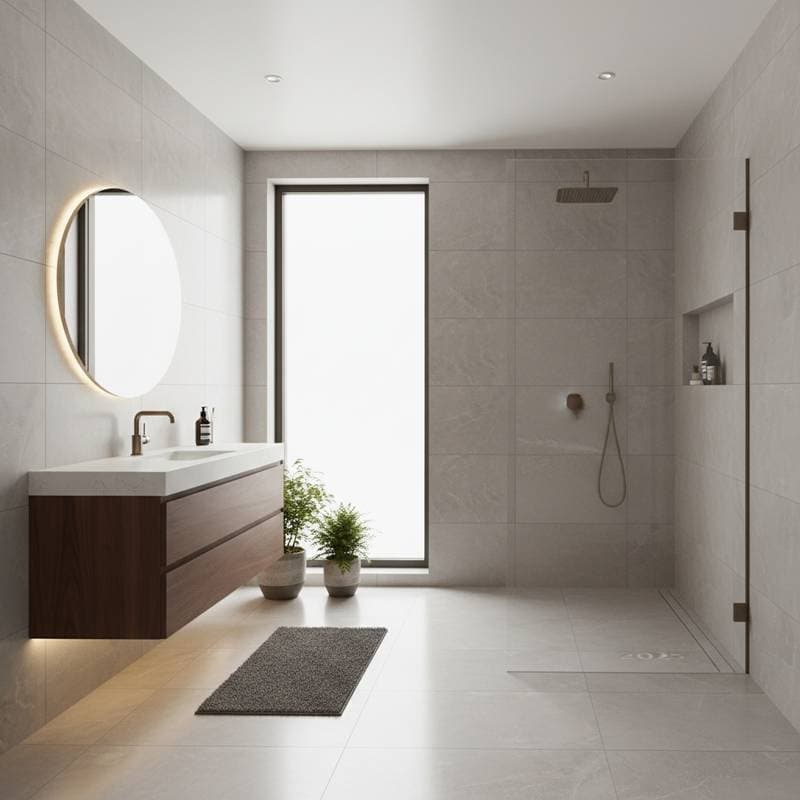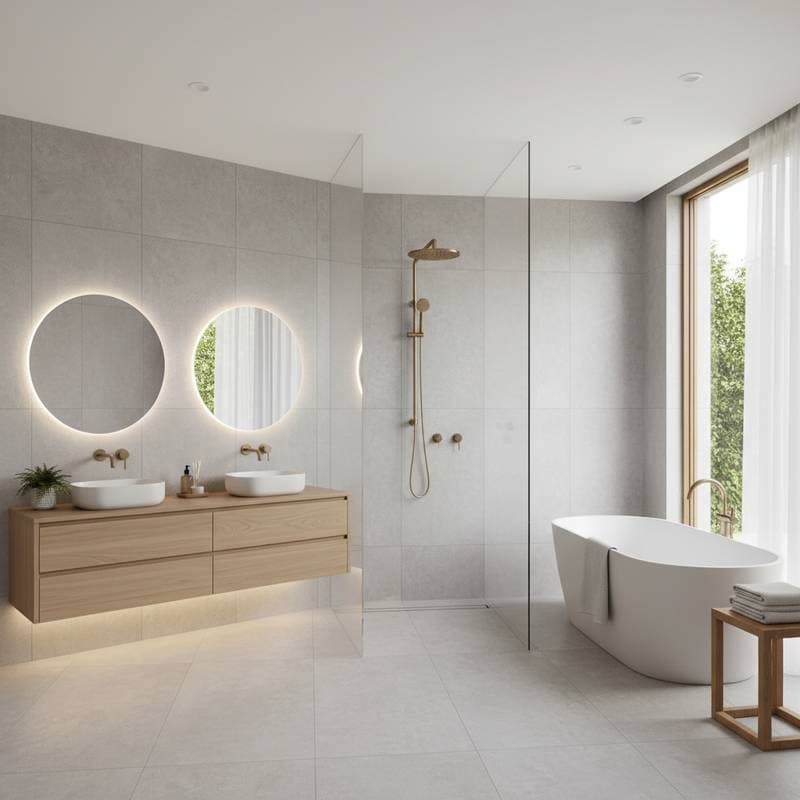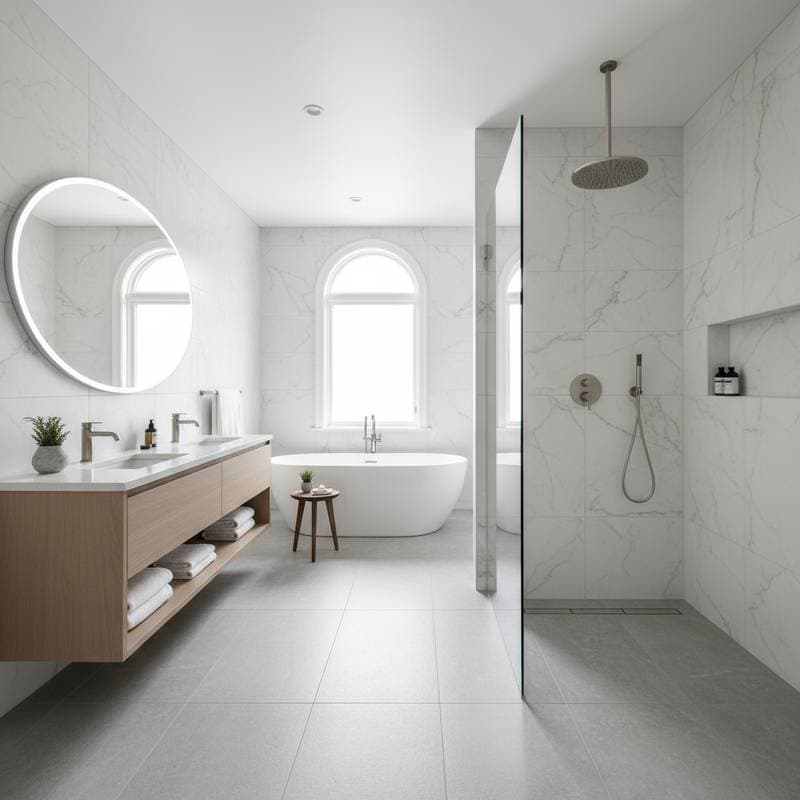Swap Tubs for Wet Rooms: Boost Home Value in 2025
Replacing an outdated bathtub with a wet room represents a strategic upgrade that enhances home value, accessibility, and overall design appeal. Homeowners in 2025 increasingly seek modern, barrier-free bathrooms that cater to aging-in-place needs and contemporary aesthetics. This conversion not only streamlines daily routines but also positions the property favorably in competitive real estate markets.
The investment typically ranges from $8,000 to $20,000, influenced by factors such as bathroom dimensions, material selections, and required plumbing modifications. Professional installation generally spans one to two weeks, minimizing disruption while delivering a durable result. For those considering this project, understanding the process ensures a smooth transition to a more functional space.
Steps to Convert a Tub to a Wet Room
Converting a traditional tub-shower combo into a fully integrated wet room demands careful planning and execution. Each phase builds upon the previous to create a waterproof, seamless environment. Follow these detailed steps to achieve professional-grade results.
-
Plan the layout meticulously. Begin by measuring the bathroom space precisely, noting the positions of the existing tub drain and water supply lines. Evaluate the subfloor's structural integrity to support the necessary drainage slope, typically 1/4 inch per foot. Consult local building codes early to secure any required permits, which may involve inspections for electrical and plumbing compliance.
-
Waterproof all surfaces thoroughly. Apply a high-quality waterproof membrane to the floor, walls up to at least 6 feet, and all joints. This critical layer, often a sheet membrane or liquid-applied system, shields against moisture penetration that could lead to subfloor rot or mold growth. Allow adequate curing time, usually 24 to 48 hours, before proceeding.
-
Modify plumbing configurations. Engage a licensed plumber to relocate the drain and shower supply lines as needed. Position the new linear or point drain at the floor's lowest point to facilitate efficient water evacuation. This step often requires cutting into joists or walls, so precise measurements prevent costly adjustments later.
-
Install a properly sloped floor base. Opt for a pre-sloped shower pan or create a custom mortar bed to direct water toward the drain. Ensure the slope remains subtle to avoid a tripping hazard while maintaining effective drainage. Test the incline with a level during installation to confirm uniformity.
-
Tile and seal for durability. Select porcelain or ceramic tiles with a high slip-resistance rating, such as those with a wet dynamic coefficient of friction above 0.42. Apply thinset mortar evenly, then grout and seal all seams to form a watertight barrier. A continuous tile pattern from floor to walls enhances the spacious, modern illusion.
-
Incorporate essential fixtures. Install a versatile shower system, including a ceiling-mounted rainfall head and a handheld wand for targeted rinsing. Choose a sleek linear drain grate that blends with the tile, and consider folding or fixed glass panels to contain splashes without enclosing the space fully.
-
Conduct comprehensive testing. Flood the area with water for 10 to 15 minutes, observing for leaks, uneven drainage, or seepage. Address any issues immediately, then apply final trim, caulk, and paint to complete the enclosure.
Timeline and Project Complexity
A standard tub-to-wet-room conversion requires 7 to 14 days from start to finish, depending on the bathroom's size and unforeseen challenges. Break down the schedule as follows:
- Planning and permitting: Allocate 1 to 3 days for design sketches, material sourcing, and code approvals.
- Demolition and plumbing work: Plan for 2 to 4 days to remove the tub, update pipes, and prepare the subfloor.
- Waterproofing, sloping, and tiling: This labor-intensive phase spans 3 to 7 days, including drying periods.
Experienced DIY enthusiasts might tackle smaller projects, particularly if they possess skills in tiling and basic plumbing. However, errors in waterproofing or sloping can result in expensive repairs, often exceeding initial costs. For optimal outcomes, especially in larger or complex spaces, professional involvement proves essential.
Essential Tools and Materials
Preparation streamlines the conversion process and reduces downtime. Assemble these items ahead of time to maintain momentum.
Tools:
- Demolition hammer or reciprocating saw for tub removal
- Wet tile saw for precise cuts
- Notched trowel set for mortar application
- Laser level for slope verification
- Power drill with mixing paddle for compounds
- Grout float and sponge for finishing
Materials:
- Waterproofing membrane (sheet or liquid)
- Cement backer board for wall reinforcement
- Modified thinset mortar, grout, and color-matched sealant
- Adjustable drain assembly and pre-sloped pan kit
- Non-slip porcelain tiles in coordinated sizes
- Silicone caulk for perimeter sealing
Stock extras like grout and thinset to account for waste or mistakes. Proper storage prevents material degradation during the project.
Indicators for Professional Assistance
Certain conditions necessitate expert intervention to avoid structural risks or code violations. Seek a licensed contractor if the subfloor shows signs of softness, water damage, or mold infestation. Similarly, projects involving drain relocation across floor joists, electrical rewiring, or load-bearing wall alterations require specialized knowledge.
A qualified plumber ensures plumbing adheres to standards, while a general contractor oversees the slope's precision and waterproofing integrity. Initial consultations often reveal hidden issues, saving time and expense in the long term.
Key Safety Considerations
Prioritize safety throughout the conversion to protect workers and future users. Shut off the main water supply and electricity before any demolition begins. Equip yourself with heavy-duty gloves, safety goggles, and a dust respirator when handling debris or adhesives.
Incorporate slip-resistant flooring and ensure all nearby outlets feature ground-fault circuit interrupter (GFCI) protection. Position fixtures to minimize fall risks, such as installing grab bars near entry points. Adhering to these measures not only complies with building regulations but also safeguards against liability and insurance complications.
Expert Recommendations for Optimal Results
Simplicity enhances both functionality and waterproofing effectiveness; minimize niches and corners where water might accumulate. Larger format tiles reduce grout lines, improving cleanliness and grip, while mosaic accents in high-traffic zones add subtle texture.
Integrate practical elements like a fold-down bench for seating or recessed shelves for toiletries, preserving the open feel. If the vanity area risks exposure to spray, a tempered glass partition provides containment without visual clutter. Focus on ergonomics to create a space that supports daily use while elevating the home's appeal.
Frequently Asked Questions
Does installing a wet room increase home value?
A thoughtfully designed wet room enhances marketability by offering luxury and accessibility features. Real estate experts note potential value additions of up to 5 percent for upgraded bathrooms, particularly in homes targeting multigenerational buyers.
Is a wet room feasible in a compact bathroom?
Absolutely, spaces as small as 5 by 7 feet accommodate wet rooms with strategic planning. Compact linear drains and minimalistic fixtures maximize floor area, ensuring the design feels expansive rather than confined.
What maintenance does a wet room require?
Routine care involves monthly grout resealing and daily squeegee use to prevent buildup. Annual professional inspections check for membrane integrity, extending the installation's lifespan.
Achieve a Market-Ready Bathroom Upgrade
Embarking on a tub-to-wet-room conversion transforms an ordinary bathroom into a versatile, high-value asset. This project delivers immediate usability improvements alongside long-term equity gains. Consult local professionals to tailor the design to your home's unique layout and start reaping the benefits of a modernized space today.









